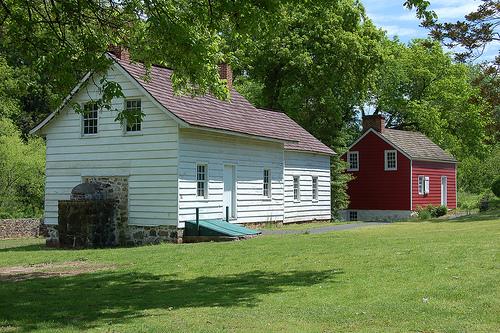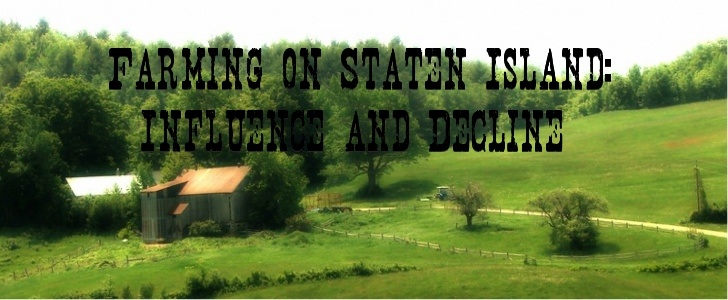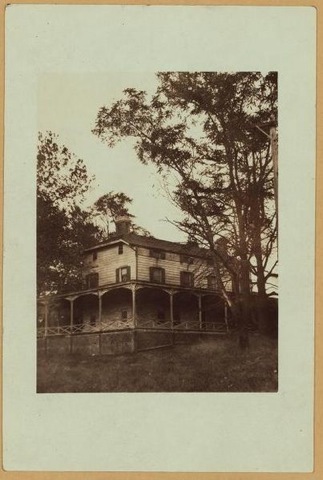Farming on Staten Island: Influence and DeclineFrom The Peopling of New York City
Farming Production: Important to Early Staten IslandThroughout New York City Farms provided large produce and livestock for the five boroughs. In particular, on Staten Island where vegetation and fruit orchards were the largest aspect of farming apart from dairy, farms grew everything from wheat to strawberries, which were quite abundant on Staten Island 3. Farms were once an essential building block of the economy as well. As of February 8th 1841, of the 2,145 business inhabitants (employed persons) on Staten Island, 841 were employed in agriculture. The growing immigration rate supported the large amount of farms and need for high production rate on the island. Crop value on Staten Island in 1839 was about $169,336, dairy produce was $25,506, and poultry produce was $8,0011. Staten Island Demographics: Farming's Effect Then and NowIn the mid 1800s an influx of Italian, Irish, and German immigrants flowed into Staten Island and were later followed by a small number of Polish and Scandinavians 7. This further increased the white population into the early 1900s. In 1900 the population of Staten Island was 67,021 with a proportion of 98.3% white, 1.6% Black, and .1% of another race 7. With this in mind it is safe to say that the majority of farmers on Staten Island around 1900 were still predominantly white individuals of European decent. Today the demographics of Staten Island are quite different then they were a century and a half ago. Is this due to the decline of farms and what happened to the population? Patricia Salmon, curator of history at the Staten Island Museum, informed me on how farming drew people of two new ethnic backgrounds to Staten Island in the mid 1900s. She explained that around 1940 Staten Island began to see an influx of Greek immigrants who were experienced farmers. She also noted that in the 1950s, before the building of the Verrazano Bridge, many Puerto Ricans immigrated to Staten Island as farm hands 4. Ultimately, the Verrazano Bridge allowed for a great influx of people, especially from Brooklyn, to come to Staten Island. Today 487,407 people occupy Staten Island. The Decline of Farming on Staten IslandFarm decline was due to a number of different variables. In an article from SI Live, Ed Dana explains how the progressive demise of farms was due to several factors including; the growing rate of people, rise of industry and factories, pollution, and especially the building of the Verrazano Narrows Bridge 3. In particular the Verrazano Narrows Bridge caused an estimated 58.6 percent increase in the population between 1960 and 1980. 7 According to Philip J. Stores, a writer for The Staten Island Advance in 1964, farms of all sizes began to fall to allow for housing developments, which facilitated the influx of people. Furthermore, he explains that families began to veer away from the life of farming because “they could not afford it (farming) for different reasons.”5 I interviewed Jimmy Kelly, who had a small farm across the road from the Historic Decker Farm. A few years ago he moved his farm to New Jersey and expanded it there. In the interview he stated, “The Island was changing, becoming more crowded, and quite frankly the upkeep of farmland, especially the large older ones, was becoming too expensive.”8 The Last Farm on Staten Island Historic Richmond Town Farmhouses, Part of the Decker Farm. Courtesy of http://farm1.static.flickr.com Preservation of farms such as the Decker Farm is important in defining the true makeup of Staten Island today. The Decker Farm has stood on Staten Island for over two centuries. It is a testament to the importance of farms in New York City and most importantly, Staten Island. Although Staten Island has changed a great deal, the Decker Farm is the largest functional farm that still stands today. In fact they still produce large amounts of fruit and vegetables are sold at the St. George Green Market.3 The Decker Farm is located on Clark Ave. in Staten Island. It was started in 1841 and was fully operational until about 1960, when it was given to the Parks Department of NYC. According to Susan Clark, of “Trust for Public Land”, John W. Guild, Executive Director of the Staten Island Historical Society states that “The Decker Farm will remain a resource to schoolchildren, the public, and future farmers.”2 Still today one can learn rug beating, participate in washing clothes on an 18th century washboard, rake hay, and carry water with yokes. Also, Immigrant farmers learn organic methods for growing crops in New York's mid-Atlantic climate.2 Overall, the Farm allows for students to learn about important history of Staten Island while also allowing people to carry on methods and culture of farming into the future Staten Island and all of New York City Sources
|

